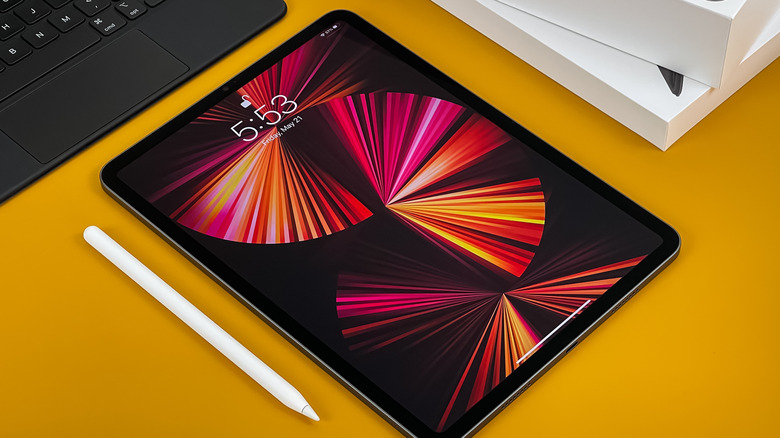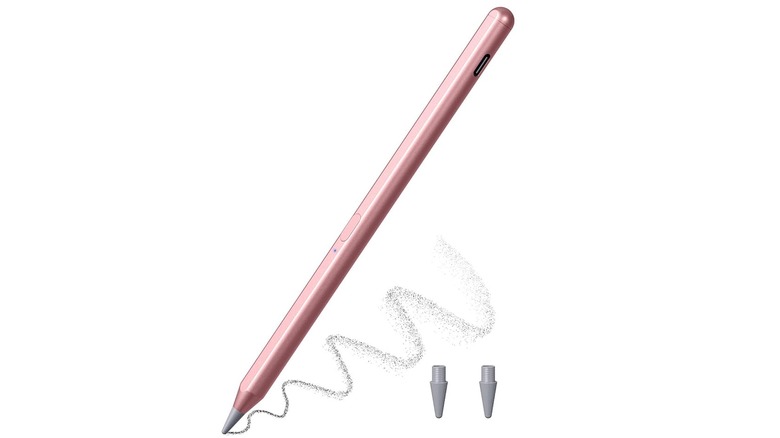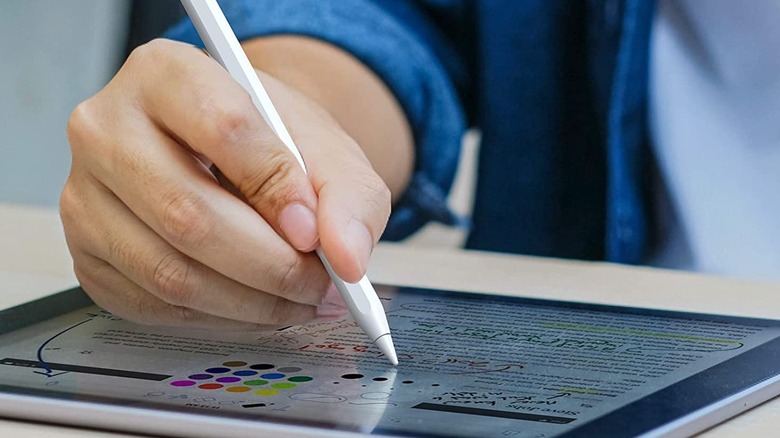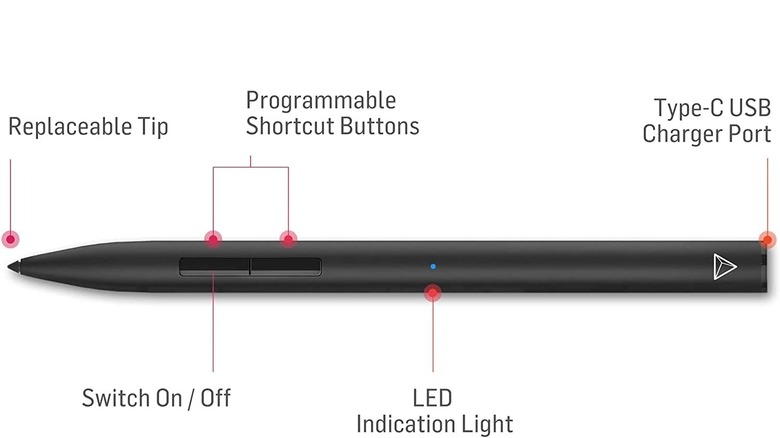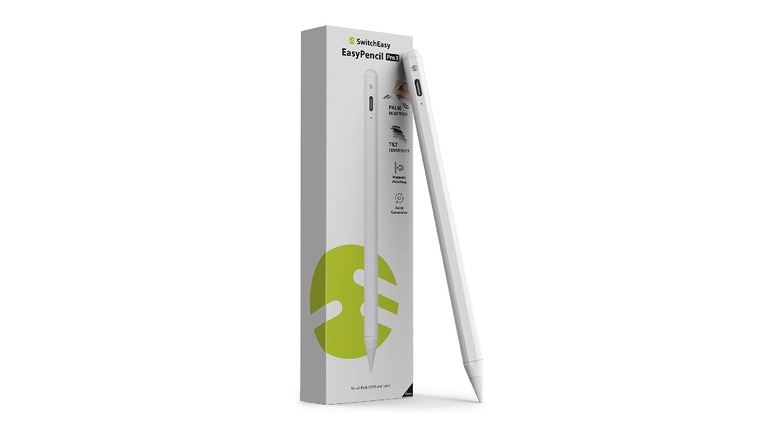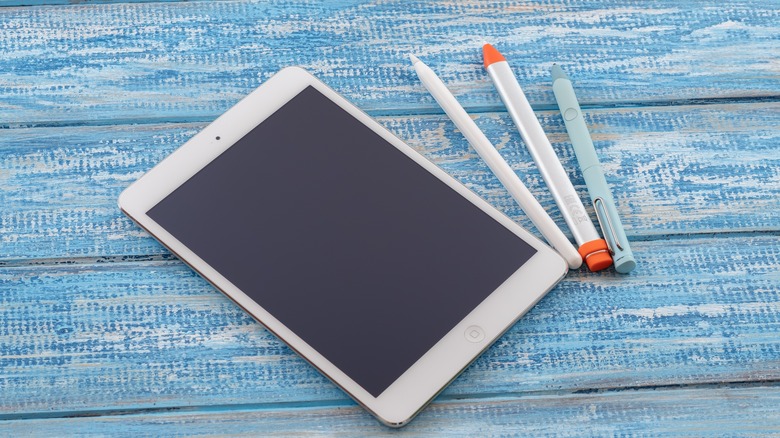The 5 Best Apple Pencil Alternatives
We may receive a commission on purchases made from links.
If you use your iPad for sketching, illustration, annotation, or calligraphy, an Apple Pencil or Apple Pencil 2 is almost mandatory. The catch is, as with most Apple products, the Apple Pencil is quite expensive. You can expect to pay $99 for the first incarnation of the stylus, and $129 for its sequel. However, despite Apple's best attempts at creating a closed ecosystem, third-party alternatives do exist. They can offer many of the Apple Pencil's benefits at a fraction of the cost. The quality can vary greatly though, so it's important to look into what you're getting.
For example, compromises usually have to be made when going third party. These alternatives offer a significant cost saving when compared to an actual Apple Pencil, but you can expect to sacrifice features or build quality in return. Apple products may come at a premium, but the materials and finishing are usually of a quality that reflects the price point. Pressure sensitivity is one of the features that is almost always absent when you're going for a discount stylus. It's incredibly useful if you know how to use it, and could be a deal-breaker for some — but if it's not something you care about, then a wider variety of alternatives becomes viable.
The MoKo Stylus: cheap and feature packed
The Moku Stylus is an inexpensive, feature-rich option for people who want to save money while keeping a lot of versatility. Like many of the other alternatives, it comes with palm rejection, magnetic attachment, and tilt function — but this one will set you back less than $27. It's also made from aluminum, so despite the price it won't have that cheap, plasticky feel some budget styluses have. As an added bonus, there are a wide array of colors to choose from. You're not limited to white, black, or grey like you are with some other options, so feel free to jazz it up a bit and express yourself before the stylus has even touched the screen.
A single charge will get up to 10 hours of action from the MoKo Stylus, and it is capable of remaining on standby for up to a year. So if you're an occasional tablet artist that only picks the iPad up every couple of months, leaving this in a drawer long-term is an option. It doesn't feature pressure sensitivity, however. Charging is performed via a USB-C cable, so you can even use your iPad's charger to top the stylus up if needed.
Zspeed Stylus Pen: it looks a bit like the real thing
The cheapest viable option is Zspeed's "iPad Pencil 2nd Generation" stylus, which is designed to look a lot like the real thing. It's also made from aluminum just like an actual Apple Pencil. Full price, one retails for $29.99, but with discounts and a coupon, you can expect to pay just a shade over $20 plus tax. Oddly enough, Zspeed's stylus is one of the few that offer magnetic charging; when you magnetically clip it to your iPad (if the iPad in question also offers this feature), its battery should refill. Alternatively, you can just plug a USB-C cable into it and charge it that way. On a full charge, you can get over eight hours of use from this stylus.
In terms of features, palm rejection is included but you don't really get too much beyond that. There isn't any tilt function, nor is there pressure sensitivity. As you may expect at the price point, it is a pretty basic stylus that connects over Bluetooth. If you don't need anything fancy and want to save some cash, this could be the ideal choice for you.
Adonit Note +: Offers pressure sensitivity
In terms of price, the Adonit Note + is not too far away from the original Apple Pencil or a used Apple Pencil 2 at just under $70, and it's as feature-packed as you would expect a high-end third-party stylus to be. Pressure sensitivity is one of the features included, and it's something you'll often see missing from a cheaper option. It pairs with the tilt sensitivity function allowing users to adjust their brush or line style and opaqueness on the fly instead of going through menus every time an adjustment needs to be made.
There are also 2,048 levels of pressure sensitivity in total. Palm rejection is also present, so there's no danger of doing the digital art equivalent of accidentally smudging your work with your hand. The Note+ also comes with a couple of shortcut buttons that can be tied to functions like the eraser, undo, and redo. However, these buttons are only compatible with certain apps and must be programmed within each app. Charging is done via USB-C and takes around an hour. A full charge will then provide up to 10 hours of continuous use.
SwitchEasy EasyPencil Pro 3
Available for $56.99 on Amazon, the SwitchEasy EasyPencil Pro 3 is solidly mid-range in the world of knock-off Apple Pencils. Despite being lower-priced than some other alternatives, the SwitchEasy EasyPencil Pro 3 is absolutely packed with features. It charges via the included fast charger and USB-C cable. The stylus handles about 10.5 hours of work on a single charge, so it's equipped to take on a standard workday plus significant overtime.
Other features include tilt sensitivity, which adjusts the thickness and depth of the output based on the angle the stylus is being held at. Palm rejection also features on the SwitchEasy EasyPencil Pro 3, so there's no need to wear gloves while working. You don't have to worry about losing your stylus either, as it will magnetically attach to the side of the iPad. The catch is, it will only support iPads manufactured between 2018 and 2021. So that's the iPad Air 5th/4th/3rd Gen, iPad Pro 11 (2018-Later), iPad Pro 12.9 (2018-Later), iPad 10/9/8/7/6th Gen, and the iPad Mini 6/5th Gen. So basically the same as the original Apple Pencil.
Logitech Crayon: a great option for kids
The Logitech Crayon started out as a stylus designed for children to use at school. Originally, only educators could purchase the devices, which currently retail for just under $70. A few years ago, Logitech decided to sell the stylus to everyone, though they did bump the price up for people who aren't working in a classroom setting.
As it is designed for children, the Crayon is pretty easy to hold. The weight and shape of the stylus mean you can get a lot of use out of it before your hand begins to suffer. Kids are also prone to breaking things, so the Logitech Crayon was designed with durability in mind. It can survive drops of up to four feet, and will probably survive if you jam it up your nostril or do whatever else kids tend to do.
It also comes with features like palm rejection, a smart tip capable of adjusting line weight, easy connection to an iPad, and seven hours of writing time on a single charge. That charging is done via a Lightning cable. It is part of a direct collaboration Logitech had with Apple, and is compatible with hundreds of apps, so despite being one of the pricier alternatives, it might be a nice middle ground between savings and functionality. The only real downside is the lack of pressure sensitivity, which may inconvenience more dedicated artists.
